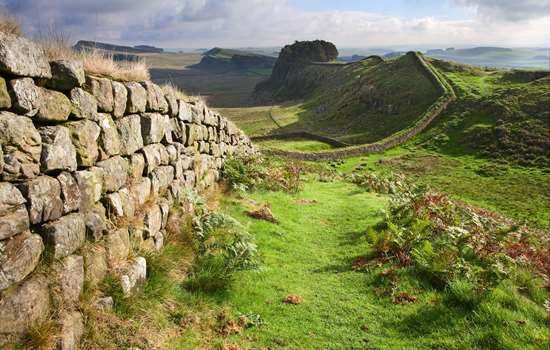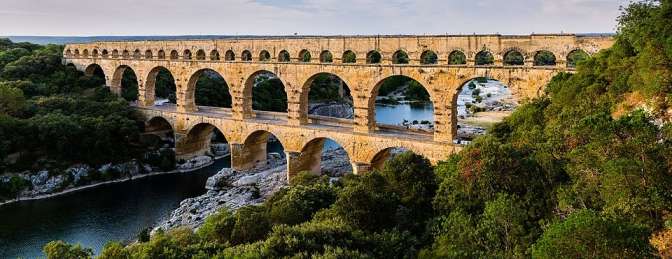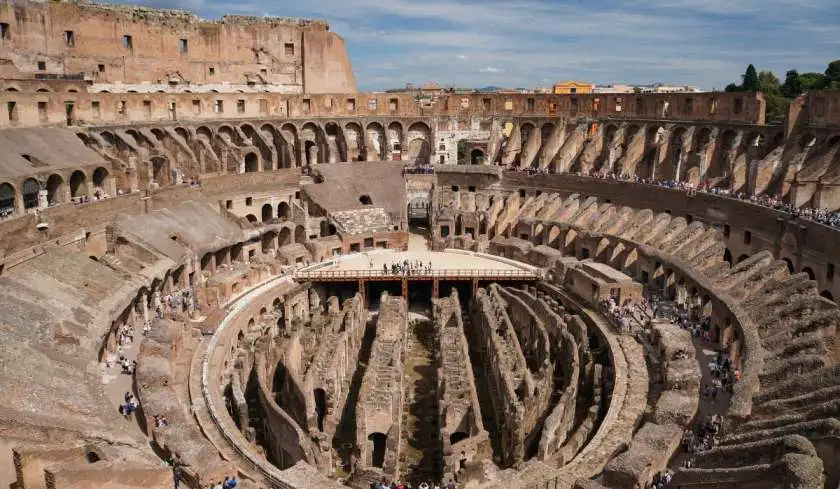The ancient Rome created one of the most wide-interesting empires, which expanded to most European regions. The Roman Realm included the Mediterranean Ocean as a central hub, which interfaces the distant corners of Eurasia and Africa through this conduit.
For centuries, the Roman emperors abandoned their power and money impression, which whatever the identity of Rome was in the field, he had conquered by building monumental structures and cities. In this article, I will take you on a trip to this ancient empire, which is still searching for 30 of the most influential Roman sites and structures standing today.
Hadrian’s Wall

Hadrian wall (Vallam Hedriyani in Latin) symbolized the border of the Roman Empire in Britannia. This magnificent wall was long to protect the areas of Rome from the points. This 178-km wall crossed the island from the current Walsand (Northeumia) to the Boney-on-Solway (Northwest Cubria).
The construction of this wall started during the reign of the Hadrian, around 122 AD and it took nearly six years to complete. With this monument, you can find various structures such as towers and forts that flanks the wall at regular intervals. Eventually, nearby military bases were developed in small villages, such as the famous Vindolanda.
If you want to experience what was to live on the northern edge of the empire, the well -protected residues and objects of Vindolanda will leave a permanent impression.
Roman Forum, Rome, Italy
Without question, the Italian capital is home to the largest collection of Roman monuments, statues, and structures anywhere in the world. One of the best things the city has to offer is the Roman Forum, which is also one of the most important ancient ruins in the entire globe. This was the site of elections, court cases, and political campaigns throughout its time as the epicenter of Roman governance. Romans employed the Temple of Saturn as a central bank, and it is an especially spectacular structure.
Pont du Gard

Pont Du Guard Roman is one of the world's most influential aquadect bridges. The possibility of the empire made the first century BC. Made it at the end of. However, some scholars made a mid-first century A.D. The date is argued and the debate still grows in the present.
This aquadect is 49 meters high and lasts 275 meters long for the longest time of three levels. The lower part acts as a bridge over six, wide arches on the river garden. The middle part maintains the avduct on its 11 arches. The upper part contains the avuduct that directs the water in the city of Nomes on 35 small arches.
One of the most influential facts is that the Romans have not used concrete to join stone blocks! In fact, you can still see the scars of Stonamson, nominating the pieces for accurate fittings. I recommend going to this place and take some pictures of this magnificent bridge that fits very well in the natural scenario.
Nimes Arena
The arena of Nîmes is one of the best protected amphitheaters standing from the Roman Empire compared to its more famous cousin, Colosseum in Rome. In fact, it remains so intact that according to the Avignon and the province's website, it is still used for bullfights during feria.
This monument is at the end of the first century. This is a familiar shape and design for Rome colosium, so the arches on the outer front supports 23,000 viewers. In the Middle Ages, the Vijigoths revived the fort in the churches, wells and even homes of the house. Finally, at the end of the 18th century, the restores began to unveil the original form of the amphitheater you can see today.
Read more:- Discover River Valleys With Their Own Local Ecosystems
Theatre of Orange
You will find the best-preserved theater manufactured during the Augustus reign in Orange, France. It is called Orange theater or Theater Antique de 'Orange. The Romans raised this structure on a hill, yet it is still in an excellent position of conservation. For example, the Grandstand, route, and corridors remain almost unchanged, despite their large size on a hill that could have disappeared over time.
In addition, one of the most influential parts of the theater is. It measures a 102 meter long and 38-meter-high appearance - a commanding appearance. Corbels and arched entries are visible and the inner amphitheater seating is still intact. Nowadays, you can also inspect the elegant sculpture of Emperor Augustus who welcome visitors.
The Aqueduct of Segovia
The fully protected Roman Aqueduct from the city of Segovia will thrill anyone. Historians Santiago Martinez and Victor Cablero noticed that the Romans erected the memorial in the first decades of the second century. The impressive structure has a 165 arches at two levels.
Overall, the avduct is 728 meters long on its upper side and reaches about 28 meters. This aquadect is another engineering work that did not use any mortar during construction. During the Middle Ages, the aquadect became a symbol of the fruiting city. In addition, in 1520, Segovians placed a sculpture of Virgin Mary with Jesus in Central Nicks to protect the city and one of the St. Sebastian.







